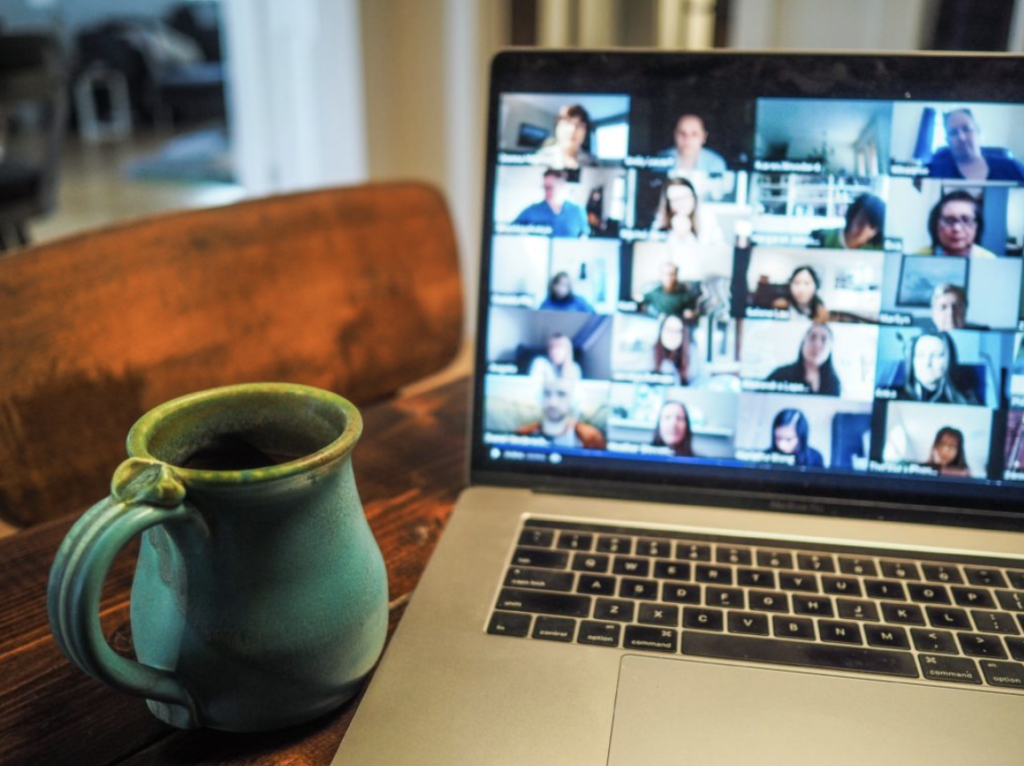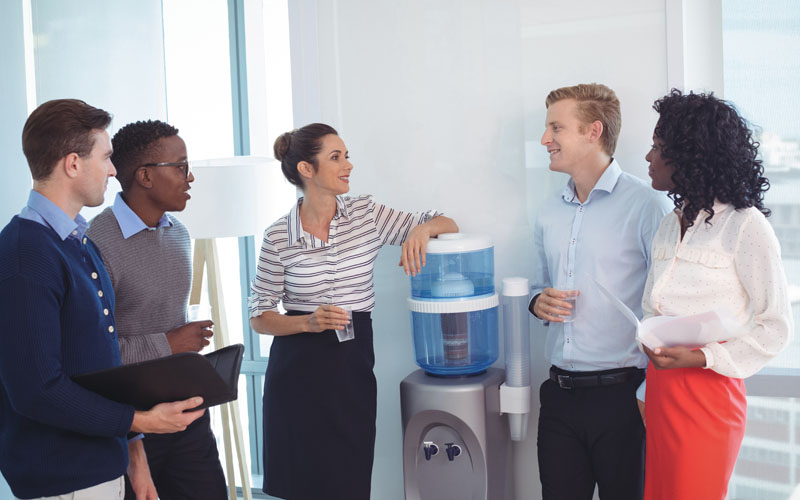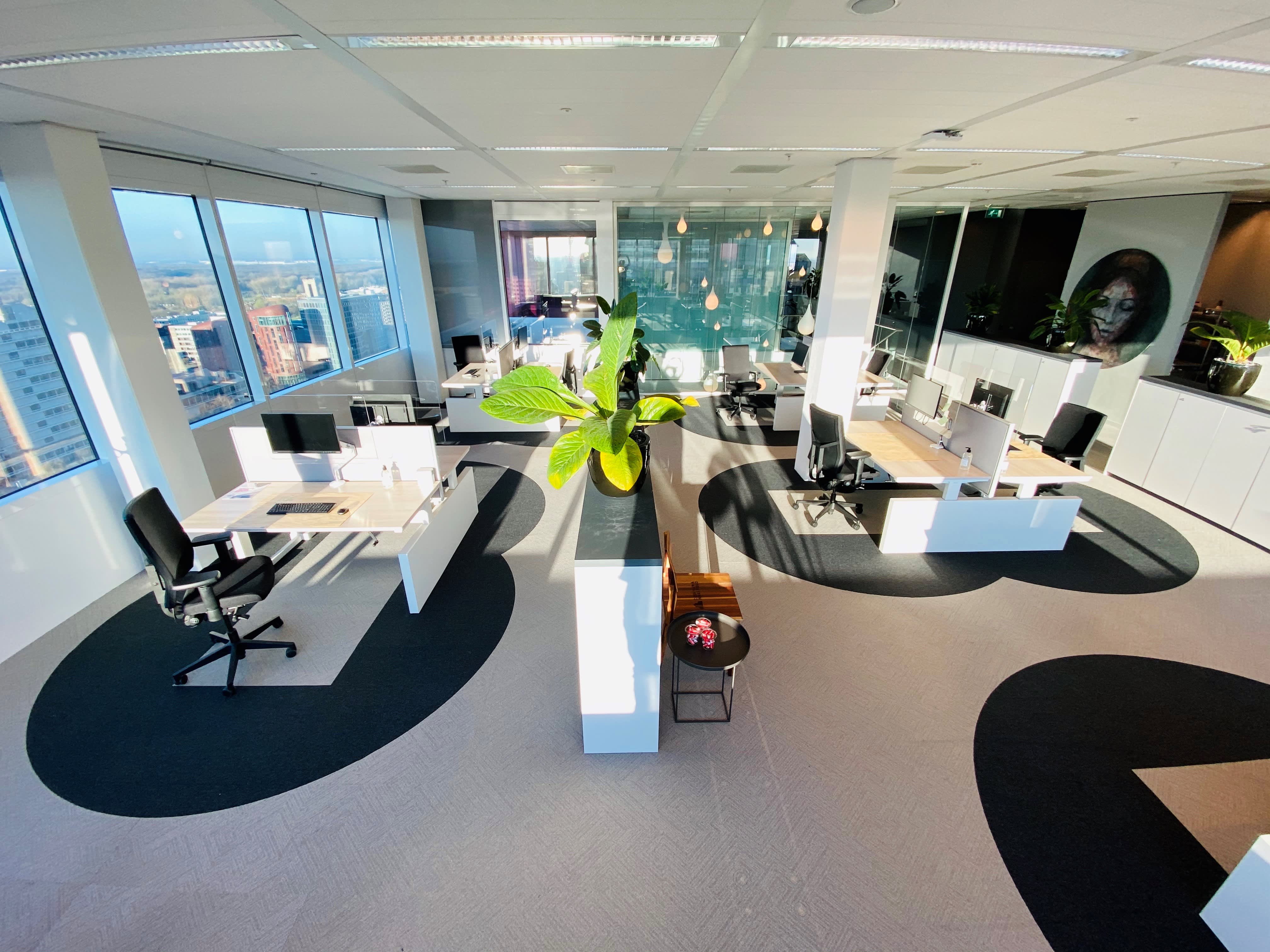
Will remote work continue to be the standard after the global pandemic recedes? Is this a fundamental shift we are seeing or a temporary one? What will change permanently going forward?
The hard part is identifying people who are actually qualified to answer these questions. Fortunately, we at the SCET did exactly that. Last week, co-founder of the SCET Stacy Lawson moderated a conversation between a group of 6 scientists, industry leaders, and entrepreneurs who are directly responsible for studying & planning the future of work in their respective organizations.
Between seven participants, the conversation circled around a variety of topics relating to serendipity at work, the ingredients for innovation, the establishment of new norms, employee flexibility, return to in-person work, and how Berkeley should adapt. Below is a summary of the main takeaways from this roundtable sorted into 4 primary buckets.
1. Serendipity Breeds Innovation: We Need a New Water-cooler

Consider for a moment the loss of happenstance brought on by Covid. How many times since March have you bumped into someone you knew from work? How many off-chance coffee trips occurred? When did you last join someone to go on a walk or get some fresh air?
Serendipity in the workplace is at all an all-time low as our tools for digital communication are fundamentally directed. Requests to meet are either accepted or rejected; events are scheduled in an orderly framework; friendly chats must be coordinated in advance. There exists almost no online format to simply “run into” someone.
Haas Professor Christina Banks reinforces this idea, claiming “Working remotely is well-suited for certain kinds of work, but certainly not for innovation. We need bump-ins with people who are very different from ourselves. This is why it’s so important right now to figure out how to harness technology in a new way. To possibly use virtual reality or augmented reality to meet and interact socially, have down-time and experience communications that would’ve normally happened in the workplace.”
To create this technology is to address a fundamental human need. We evolved to communicate in groups (this is why tables are round), yet body language, physical distance, and hand gestures are hardly translatable through a webcam. As NSF researcher Tara Behrand states, “The feeling of sharing a physical space with somebody really facilitates trust & social interaction. The technology is there to accomplish this, it just has to do with what norms we set and what is expected. “
Tools like gather.town and virbela serve as a harbinger to a much greater technological shift. One characterized by the creation of online digital spaces which manage to account for the nuanced idiosyncrasies of human social interaction.
2. Employee Resilience & The Establishment of New Norms
Leaders who cannot adapt will fail to build long-term resilience & loyalty within their organization. Wayne Cresby, founder of Humu, is aiming to maximize employee resilience & mental health by integrating nobel-prize winning research on organizational resilience into businesses during the pandemic. Cresby claimed that “Companies who are currently creating successful employee environments are achieving this through 4 essential elements.”
- Personal Flexibility
- Empathetic Environment
- Establishment of New & Dynamic Norms
- Offering a Support System
By allowing employees to choose flexibly how they coordinate their schedule, companies are fundamentally empowering their employees, particularly those who face external uncertainties. Parents, for example, may now adjust their work schedule to account for their children’s new at-home education without worrying about arbitrary hours and deadlines. The key takeaway: let your employees adapt to changing circumstances brought on by Covid.
Beyond flexibility is the importance of curating an empathetic environment, one which really attempts to understand what people’s needs actually are. This kind of environment will inevitably lead to the establishment of new norms that are actually effective, as they reflect the desires and needs of the employees who contributed to them. Cresby reiterates that norms should be based on the outspoken needs of employees, and can range from small changes (e.g short breaks between meetings) to large coordinations (e.g. post-work social events & online gatherings).
These primary goal is ensuring the health and well-being of employees by offering a system of support. If leaders want productivity to stay high & employer turnover to stay low, they need to make employees feel heard and connected with. By simply being present for a conversation, leaders can foster a real connection with their employees. Banks follows this point up with the observation that “health & well-being is so important because it is the pathway to productivity. That’s an under-appreciated scientific finding, and there is a lot data to back it up. Productivity and life satisfaction come from need satisfaction. So need satisfaction leads to well-being, which leads to health and productivity.”
The key takeaway here: treat your employees and co-workers as human beings first. Ask what they need, adjust norms to their needs, and leave ample time to connect and be present.
3. Handling Returns to the Office

As companies start to explore a gradual return to in-person work, questions about safety & responsibility become top of mind. Lawson posed a question to panel, asking “What are the most effective companies doing to evaluate timing, safety, and health concerns of returning to in-person work?”
One immediate area of consensus was regarding the attributes of a physical workspace. Implementing spaced-out desks, one-way walkways, a queue system for picking up lunch, hand-washing, and sanitization stations are all fundamental to maintaining safety, and equally important, the perception of safety.
While some businesses are afforded the luxury of manipulating these variables, Parbhu poignantly added that “for blue-collar work, this just isn’t possible. People need to show up to work to pay their rent. This also applies to schools. Some have the facilities and ability to account for this, while others simply don’t have the resources.”
Another solution to augment safety, Parbhu added, was a metaphorical “securing of the border” wherein all entry points to a building require temperature checks and symptom monitoring for each person who is going to enter. “These I think are real challenges in terms of trying to secure the workplace itself”
Scott Philips of SalesForce added that “The big component that is required from a safety standpoint is trust. You know that has to be a value that is built into the culture. Trust for health and well-being. How do you build that from a leadership standpoint & a peer-to-peer standpoint? That is, from a cultural standpoint, at the top of the list of considerations.”
Key takeaway: engineer a Covid-safe workplace, consider differences in best practices between industries, always check for symptoms, and establish a strong relationship of trust within your culture.
4. What should Berkeley be doing?

The final question posed is one that is pertinent to our school. Each panelist gave a thoughtful response on how Berkeley can adapt to unforeseen circumstnaces we are in.
“Embrace this notion of collision. A lot of entrepreneurship is about the notion of happy collision. By facilitating this sharing of creative information, we are allowing for brainstorming and innovation to emerge.” – Sunita Parbhu, CVKey Project
“Facilitate multi-disciplinary collaboration. These tools that we build to help people socialize and get information during Covid end up being really valuable in the long term.” – Tara Behrend, Purdue & NSF
“Every time a crisis happens, we can start to understand how to navigate quickly. We should start to think through what are the behaviors of the people who are navigating these things and doing so successfully. Which personalities win out? Then reinforce those.” – Wayne Crosby, Founder of Humu
“There are huge opportunities around distributed work and distributed teams. Drawing upon talent in areas we may have never had access to before. Consider how we put leadership in place to best manage a distributed environment. There’s also a huge opportunity to explore the equity issues we talked about further.” – Scott Philips, SalesForce
“Before Covid, healthy workplaces were sort of seen as a luxury. They were seen as a wellness program. We need to bring the best about what healthy workplaces were before to what they are in the future. We should think more creatively about where work can happen. Even perhaps mobile lounges that go around to companies and allow people to do some innovative thinking and get to know each other.”
We thank all of the creative minds that participated in this panel for their thoughts on work after Covid. To learn more about the future of work & how to spur innovation during the pandemic, stay up to date with our newsletter & watch our interviews with established founders.
